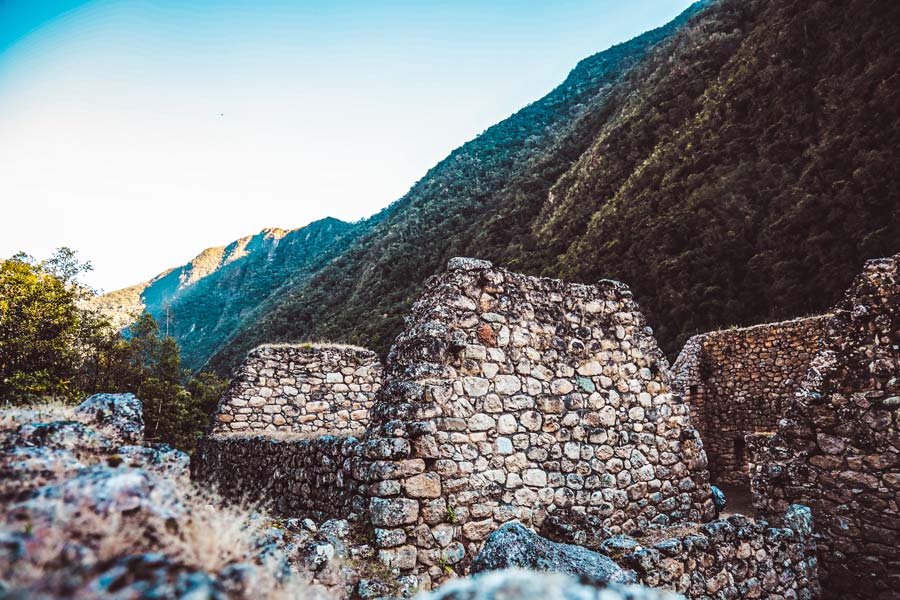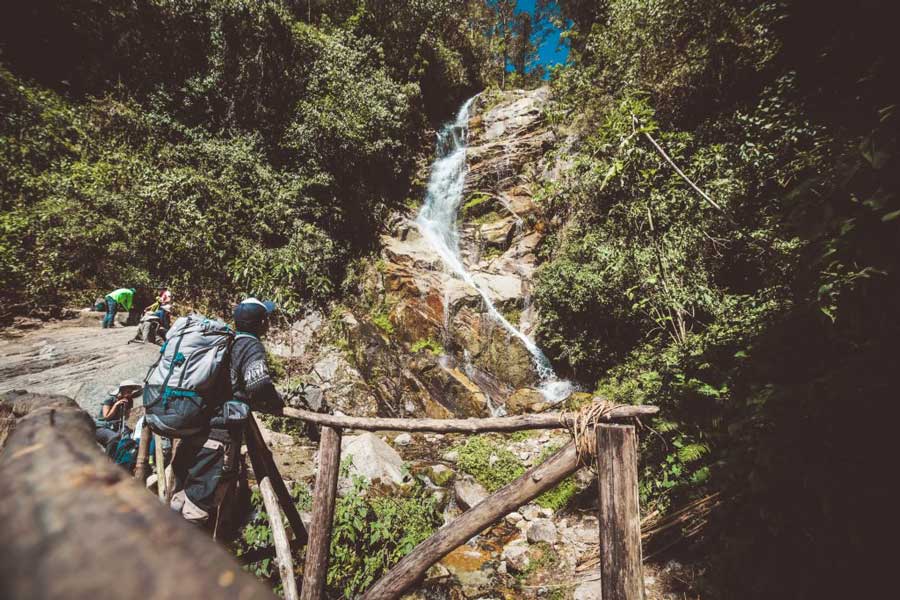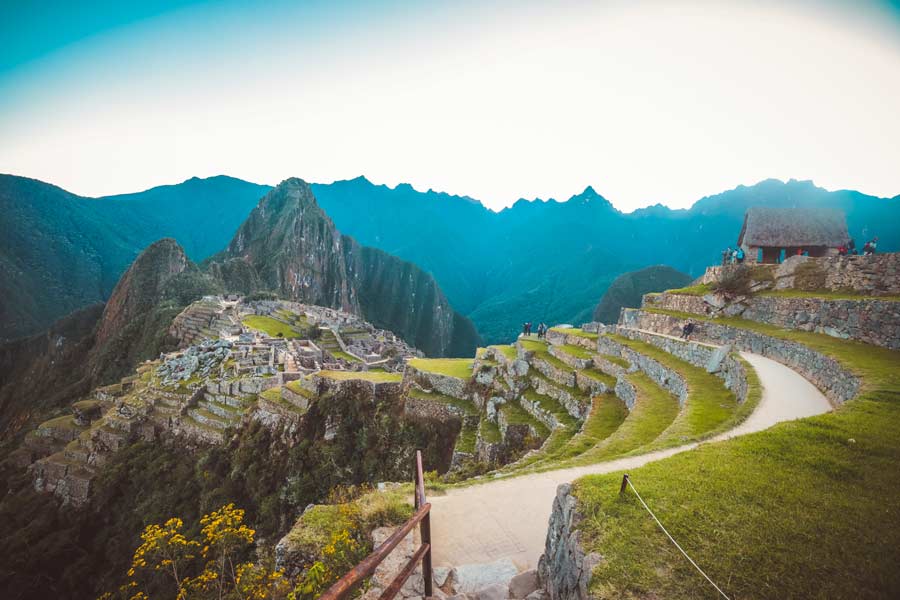Take advantage of the 2-day Inca Trail and visit Machu Picchu
It was now or never. In my company, the work never seems to end. I needed the money and had to sell my vacation to my bosses. Afterward, I regretted it because the stress was killing me, and my performance started to decline. My bosses weren’t very happy about it, and they quickly let me know it. When I explained the situation to them, they told me, “Ok, Jhon, you can take 5 free days to recuperate, but when you get back, we want to see you working even harder.”
My obsession with Machu Picchu started on the internet. As I collected more information, this prodigy of architecture and engineering amazed me more and more. So when they told me about these free days, I thought, “Will I have enough time to go to Peru and see Machu Picchu?” Fortunately, I found out there’s an option for those who want to see Machu Picchu after hiking down the ancient Inca Trail in very little time. Thanks to Salkantay Trekking, I could reserve my space and book this trek very quickly through the internet. Without realizing it, everything was ready.
Day 1: Our adventure starts
It took me almost a whole day to get to Cusco in Peru. I preferred taking it easy that night and then see a little more of this timeless city the next day. Besides that, they were very clear with me. Everyone needs to acclimatize at least 2 days before starting any trekking route in the Andes.
They picked me up between 4:00 am and 4:30 am in a van where I met the rest of the travelers. I took advantage to sleep a little, and in approximately 1.5 hours, we arrived to the Inca city of Ollantaytambo. Since we left early, I didn’t have the opportunity to eat breakfast at the hotel; however, our guide told me not to worry. In Ollantaytambo, while we stood in line to go into the train station, we found kiosks selling everything we needed: water, electrolyte drinks, cookies, crackers, chocolates, hot coffee, sandwiches, etc. The line of tourists is truly ginormous, so you have to be patient. Just before boarding the train, we saw the sun spilling over the mountains for the first time this morning. The sacred mountains of Pitusiray and Veronica were covering us with their colossal presence.
Expedition is the name of the train we board. It has a transparent roof and is decorated with art from the Peruvian reporter and sketcher Guaman Poma de Ayala. We go through the Andean mountains next to the sacred river Vilcanota for 1 hour and 10 minutes until we get to Km. 104. The Urubamba River or Vilcanota is also known as Willka mayu (Sacred River) because, in Andean culture, it reflects the Milky Way. Besides that, this river is the only one that flows toward the Amazonian region, contrary to the other rivers in the area.
The fact that the train has windows in the roof is particularly meaningful because we can appreciate the snowy peaks that appear on top of us. During this ride, we also appreciate the lifestyles of local people, as well as the archeological center of Llaqtapata near Km. 88.
Suddenly, the vegetation changes and the heat rises. This is the signal that we are close to Km. 104. There, we get off and immediately start our trek, crossing a hanging bridge. A few meters after that, we find a control post of the Ministry of Culture, where we present our entrance tickets (your guide will give you the ticket!) and our original passports. This portion of the Inca Trail is known as Route 5, and they say it was used exclusively by the elite.
The first archeological center we’ll see is Chachabamba, a storage and supply center for agriculture. There, we’ll see a combination of Inca and pre-Inca architecture, mostly in the part where the alters are found.
During this trek, you can also see beautiful orchids. There are more than 500 varieties in Peru, and 200 of them are found along the Inca Trail. A plan made to prevent their disappearance protects all of these flowers. One very interesting piece of data is that orchids possess both sexes.
On this trail, you’ll also find medicinal plants. For example, you can use the malva in hot baths to fight stomach and vaginal infections. However, the malva water can’t be drunk because it’s very harmful. You’ll also find ferns used to cause diarrhea and clean out the stomach; because of that, it was used for purging before important, ancestral ceremonies.
In these high places, I’m already getting hungry. So I look at what they’ve given us in our cloth bag of snacks: a bottle of Powerade, an apple, chocolate, crackers, dried fruits and a lunch.
After about 3 hours of hiking, we get to the impressive waterfall of Wiñay Wayna, which originates in Phuyupatamarca. We’ll take advantage of its crystal waters to refresh ourselves in the heat.
We continue our trek a few more minutes to find an immense rock that welcomes us to the archeological center of Wiñay Wayna. Since Inca architecture is in perfect symphony with nature, we get an impressive view of the mountains. Our guide tells us that Wiñay Wayna was a place for cultivating quinoa and preparing young people for war.
After taking some photos, we continue our trek and will soon arrive to a huge staircase known as “Gringo killer” due to the huge amount of effort needed to climb it. Immediately after that, you get to the Inti Punku or Sun Gate where you can appreciate Machu Picchu right in front of your eyes. Tourists can’t hide their surprised looks in front of one of the Seven Wonders of the Modern World covered in a golden, afternoon light.
However, we all know we have to wait until tomorrow to walk through the streets of this magical and ancient city-state. Because of that, we take an alternative path going toward the exit. Next, we get on a bus that goes down 30 minutes to the town of Aguas Calientes, a miniature city that still has everything necessary for the tourists. Some say it’s the smallest metropolis in the whole world. We’ll spend the night in a hotel so, after taking a shower, we enjoy a delicious dinner in a local restaurant.
Some of my fellow trekkers take advantage of the evening hours to visit the medicinal hot springs close to the town. That night, I slept more soundly than I had in a while. I imagine that my body (and my spirit) have healed a bit after seeing such special places.
Day 2: The unforgettable Machu Picchu
Salkantay Trekking prepared our entrance tickets to Machu Picchu for the first shift of the day (remember that all entrances have an assigned schedule). In spite of the fact that we got up very early, at 4:30 am, we find a huge line of people waiting to get on the bus that will take us 30 minutes up to the archeological site.
We enter this immense sanctuary at about 6:00 am. The sun still hasn’t come over the mountains, so we wait patiently to see how it illuminates the mountain of Huayna Picchu. The tranquility that’s felt at this hour of the morning is priceless. During the afternoon, so many tourists fill this place so it’s difficult to stay calm. However, in the early morning, one can find a corner to contemplate life in silence. It’s really impressive to observe how the sun starts to light up Huayna Picchu, which has an incredible shape: the immense face of a sleeping giant.
We’ll go through this city-state in the company of our guide who’ll show us the most important and meaningful places. After that, we’ll have time to connect ourselves with this timeless stone city. Machu Picchu is very well conserved, and the energy you feel is undeniable. Particularly, 4 constructions impressed me: the Temple of the Condor, the Temple of the Sun, the Temple of the 3 Windows and the Intiwatana, a beautifully carved stone that functions as an astronomical calendar. Besides that, some people in our group hiked up Huayna Picchu and Machu Picchu Mountain. Don’t confuse Machu Picchu Mountain with the archeological site; they’re two different things! You can learn more about these mountains by clicking here. They took 3 hours, and I took advantage to simply walk around since Machu Picchu is quite large. After that, our guide told us how to get out.
At the end, we’ve got two options: go back to Aguas Calientes on foot (free) or on the bus (paying USD $12). I preferred to take the bus. Next, the train took us back to the Inca city of Ollantaytambo on the same route that goes along the sacred river Urubamba. I notice that many of the mountains surrounding Machu Picchu are, in reality, immense rocks carved out of one single block. I remember at that moment that our guide told us that the mountain on top of which Machu Picchu is constructed is an enormous, granite rock and that the granite contains quartz. Maybe because of that, I feel this strange change, this relief.
“The Incas were grand energy manipulators and deeply knowledgable about the sky. Machu Picchu is a great, energetic center that is activated now by the change of era”. I remember again what our guide told us. And, as I move away from this sanctuary, that thought repeats itself over and over again in my head.



















Leave A Reply